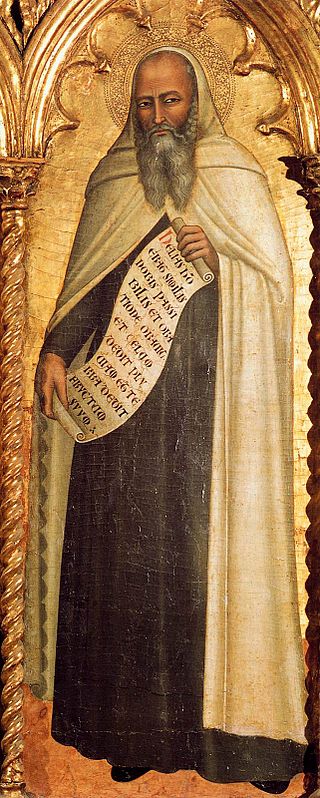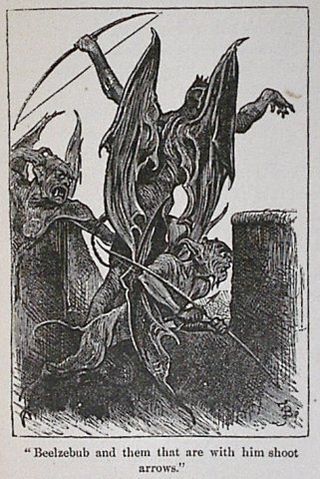Related Research Articles

Elijah was, according to the Books of Kings in the Hebrew Bible, a prophet and a miracle worker who lived in the northern kingdom of Israel during the reign of King Ahab. In 1 Kings 18, Elijah defended the worship of the Hebrew God over that of the Canaanite deity Baal. God also performed many miracles through Elijah, including resurrection, bringing fire down from the sky, and entering heaven alive "by fire". He is also portrayed as leading a school of prophets known as "the sons of the prophets". Following his ascension, Elisha, his disciple and most devoted assistant, took over his role as leader of this school. The Book of Malachi prophesies Elijah's return "before the coming of the great and terrible day of the LORD", making him a harbinger of the Messiah and of the eschaton in various faiths that revere the Hebrew Bible. References to Elijah appear in Sirach, the New Testament, the Mishnah and Talmud, the Quran, the Book of Mormon, and Baháʼí writings.

Judaism considers some names of God so holy that, once written, they should not be erased: YHWH, Adonai, El ("God"), Elohim, Shaddai ("Almighty"), and Tzevaot ; some also include Ehyeh. Early authorities considered other Hebrew names mere epithets or descriptions of God, and wrote that they and names in other languages may be written and erased freely. Some moderns advise special care even in these cases, and many Orthodox Jews have adopted the chumras of writing "G-d" instead of "God" in English or saying Ṭēt-Vav instead of Yōd-Hē for the number fifteen or Ṭēt-Zayin instead of Yōd-Vav for the number sixteen in Hebrew.

Baal, or Baʽal, was a title and honorific meaning 'owner', 'lord' in the Northwest Semitic languages spoken in the Levant during antiquity. From its use among people, it came to be applied to gods. Scholars previously associated the theonym with solar cults and with a variety of unrelated patron deities, but inscriptions have shown that the name Ba'al was particularly associated with the storm and fertility god Hadad and his local manifestations.

Bethel was an ancient Israelite sanctuary frequently mentioned in the Hebrew Bible.

ʼĒl is a Northwest Semitic word meaning "god" or "deity", or referring to any one of multiple major ancient Near Eastern deities. A rarer form, 'ila, represents the predicate form in Old Akkadian and in Amorite. The word is derived from the Proto-Semitic *ʔil-, meaning "god".

Hadad, Haddad, Adad, or Iškur (Sumerian) was the storm and rain god in the Canaanite and ancient Mesopotamian religions. He was attested in Ebla as "Hadda" in c. 2500 BCE. From the Levant, Hadad was introduced to Mesopotamia by the Amorites, where he became known as the Akkadian (Assyrian-Babylonian) god Adad. Adad and Iškur are usually written with the logogram 𒀭𒅎dIM—the same symbol used for the Hurrian god Teshub. Hadad was also called Pidar, Rapiu, Baal-Zephon, or often simply Baʿal (Lord), but this title was also used for other gods. The bull was the symbolic animal of Hadad. He appeared bearded, often holding a club and thunderbolt while wearing a bull-horned headdress. Hadad was equated with the Greek god Zeus, the Roman god Jupiter, as well as the Hittite storm-god Teshub.
Adrammelech is an ancient Semitic god mentioned briefly by name in the Book of Kings, where he is described as a god of "Sepharvaim". Sepharvaim is commonly, but not certainly, identified with the twin cities of Sippar Yahrurum and Sippar Amnanum on the banks of the Euphrates, north of Babylon. The name Adrammelech probably translates to "Magnificent king."
Jabesh-Gilead, sometimes shortened to Jabesh, was an ancient Israelite town in Gilead, in northwest Jordan. Jabesh is mentioned several times in the Hebrew Bible primarily in connection with King Saul battles against the Ammonites and Philistines
According to the Book of Joshua, Adonizedek was king of Jerusalem at the time of the Israelite invasion of Canaan. According to Cheyne and Black, the name originally meant "Ṣedeḳ is lord", but this would likely have been read later as meaning "lord of righteousness" or "my lord is righteousness".
Bamoth-Baal was an elevated point in the land of Moab mentioned in the Hebrew Bible. It was allotted to the Tribe of Reuben, and included with a list of towns near Heshbon. It is probably identical with the Bamoth between Nahaliel and the "valley that is in the country of Moab, to the top of Pisgah", mentioned in the list of stopping-places in Numbers 21:19-20. Bethbamot in the Moabite Stone, line 27, may also be considered as connected with it.
A biblical name, Baal-meon, meaning Lord of Dwelling, was the name of a town of Reuben, that some have identified as modern-day Ma`in in Jordan. It was allegedly the birthplace of the prophet Elisha. It appears in the stela of Mesha, king of Moab, who seized it in the 9th century.

Kafr Thulth is a Palestinian town located on high, flat land south of Azzoun, 28 kilometers (17 mi) south of Tulkarm in the Qalqilya Governorate. The average elevation is 270 meters (890 ft) above sea level. According to the Palestinian Central Bureau of Statistics, the town's population was 3,921 in the 2007 census.

Beelzebub, also spelled Beelzebul or Belzebuth, is a name derived from a Philistine god, formerly worshipped in Ekron, and later adopted by some Abrahamic religions as a major demon. The name Beelzebub is associated with the Canaanite god Baal.

Many place names in Palestine were Arabized forms of ancient Hebrew and Canaanite place-names used in biblical times or later Aramaic formations. Most of these names have been handed down for thousands of years though their meaning was understood by only a few. The cultural interchange fostered by the various successive empires to have ruled the region is apparent in its place names. Any particular place can be known by the different names used in the past, with each of these corresponding to a historical period. For example, the city of Beit Shean, today in Israel, was known during the Israelite period as Beth-shean, under Hellenistic rule and Roman rule as Scythopolis, and under Arab and Islamic rule as Beisan.

"Thou shalt not make unto thee any graven image" is an abbreviated form of one of the Ten Commandments which, according to the Book of Deuteronomy, were spoken by God to the Israelites and then written on stone tablets by the Finger of God. It continues, "... any graven image, or any likeness [of any thing] that [is] in heaven above, or that [is] in the earth beneath, or that [is] in the water under earth: Thou shalt not bow down thyself to them, nor serve them."

The name Sukkot (Succoth) appears in a number of places in the Hebrew Bible as a location:

Tell Maon was a biblical town in the Hebron Hills, formerly known simply as Maon, rising 863 metres (2,831 ft) above sea level. The town, now a ruin, is mentioned in the Book of Joshua (Joshua 15:55 and the Books of Samuel. It is located about 6 kilometres southeast of Yatta.

1 Kings 18 is the eighteenth chapter of the Books of Kings in the Hebrew Bible or the First Book of Kings in the Old Testament of the Christian Bible. The book is a compilation of various annals recording the acts of the kings of Israel and Judah by a Deuteronomic compiler in the seventh century BCE, with a supplement added in the sixth century BCE. This chapter belongs to the section comprising 1 Kings 16:15 to 2 Kings 8:29 which documents the period of Omri's dynasty. The focus of this chapter is the activity of prophet Elijah during the reign of king Ahab in the northern kingdom.
References
 This article incorporates text from a publication now in the public domain : Singer, Isidore; et al., eds. (1901–1906). "Baal-shalisha". The Jewish Encyclopedia . New York: Funk & Wagnalls.
This article incorporates text from a publication now in the public domain : Singer, Isidore; et al., eds. (1901–1906). "Baal-shalisha". The Jewish Encyclopedia . New York: Funk & Wagnalls.